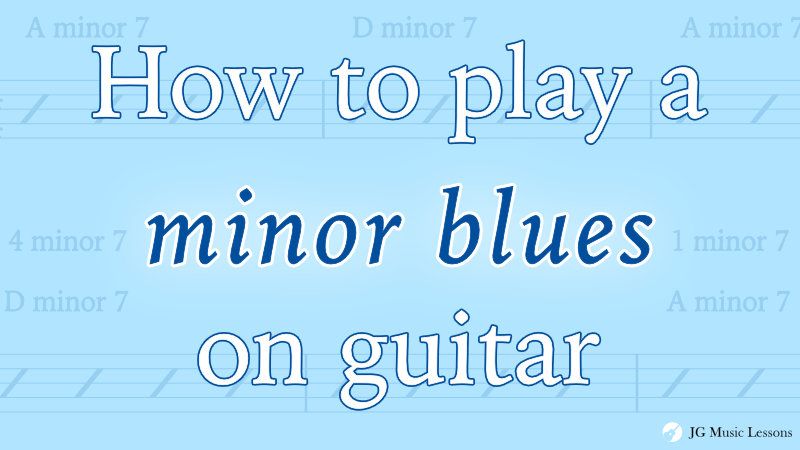In this lesson, we’ll be covering how to play a minor blues progression on guitar in 3 different levels and apply it to different keys. Also referred to as a minor 12 bar blues, this progression is an essential part of the blues genre which provides a framework for musical expression and improvisation.
We’ll go over how to play this progression using open chords, 7th chords, and jazz chords. If you’re not familiar with a standard 12 bar blues, I recommend checking out how to play a 12 bar blues. Grab your guitar and let’s get started!
Minor blues progression
The typical minor blues has 12 measures, hence the name “minor 12 bar blues”. The basic chords for a minor blues progression are the 1 minor, 4 minor, and 5 minor chord. For example, in the key of A minor these chords would be A minor, D minor, and E minor. You can click on the chords with links to learn different ways of playing that chord.
A minor blues chords
For an easy way to play this progression, here are some open chords you can use in the chart below.

A minor blues progression
The following lead sheet shows the minor blues progression in the key of A minor. Numbers are written above each chord to show how each they relate to the key center (this is known as a numerical chord analysis).
It’s worth noting that the 5 chord is often changed to a Major chord because it creates a stronger resolution when landing back to the 1 chord.

Minor blues progression using 7th chords
Now, we’ll apply the progression to the key E minor. The basic chords for an E minor blues progression are E minor, A minor, and B minor.
To show a variation of the progression, we will change all these chords to 7th chords. We are also adding a 1 dominant chord which acts as a 5 of the 4 chord. This is known as a secondary chord.
This variation has the chords E minor 7, A minor 7, E 7, B minor 7, and B 7.
E minor blues chords
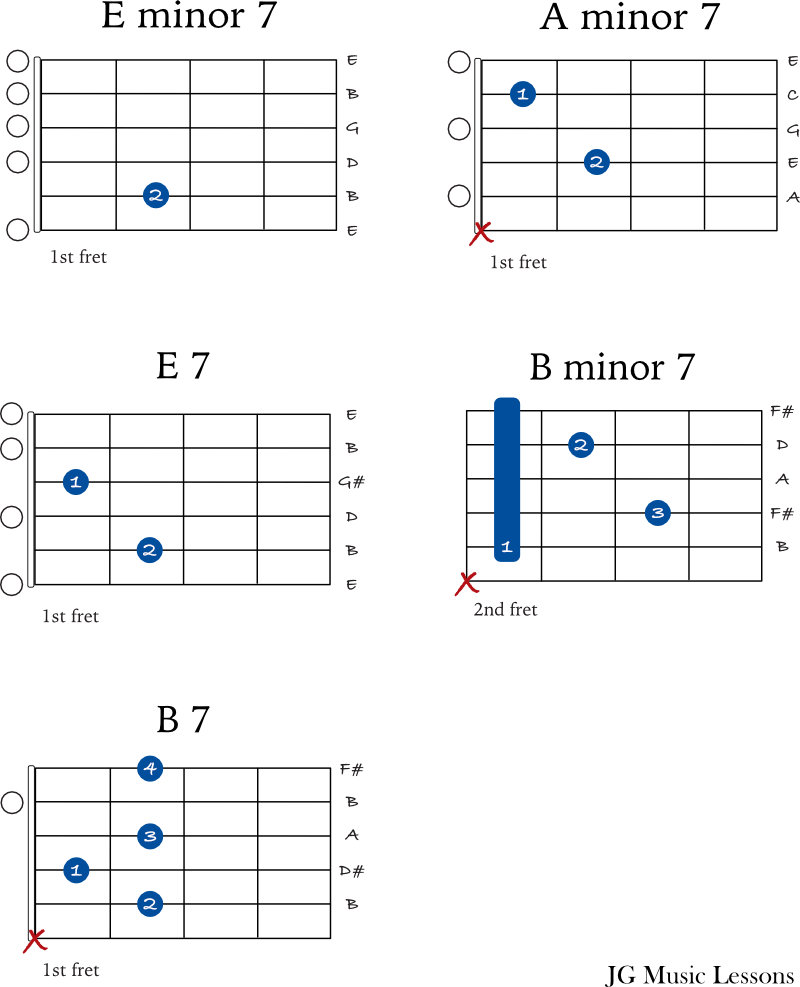
E minor blues progression
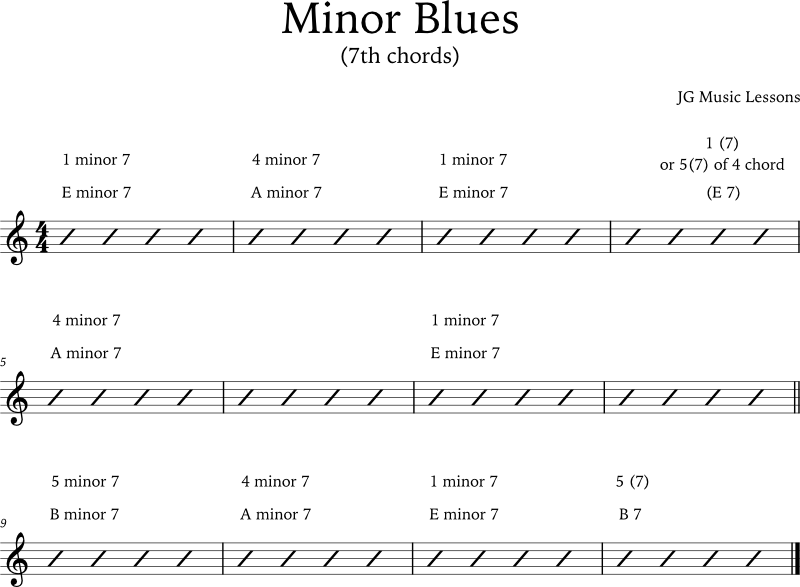

Minor blues progression using jazz chords
Now, let’s apply the progression to the key of G minor. The basic chords for an G minor blues progression are G minor 7, C minor 7, and D minor 7.
For this last variation, we will use jazz chords, meaning that the chords have added note extensions to their basic structure for added color. We will also add a b6 dominant chord in measure 9 before changing to the 5 chord in measure 10. This addition creates a richer harmony and movement to the progression.
This variation has the chords G minor 7(11), C minor 7(9), G 7(b13), Eb 7(9), D 7(#9).
G minor blues chords
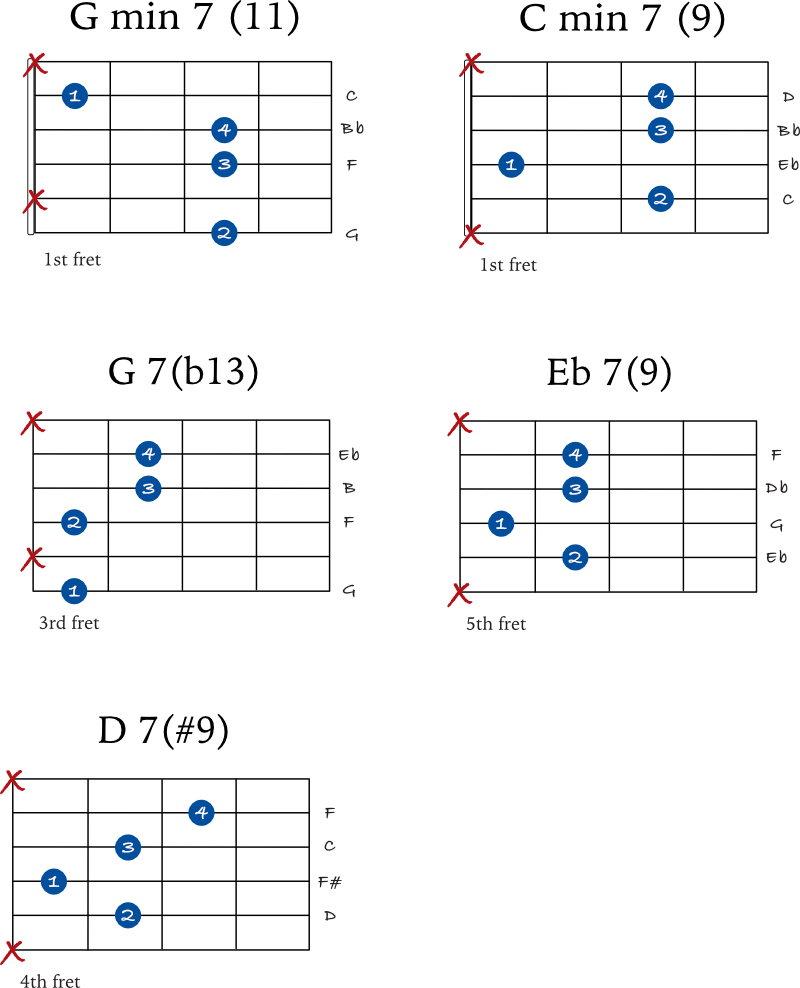
G minor blues progression
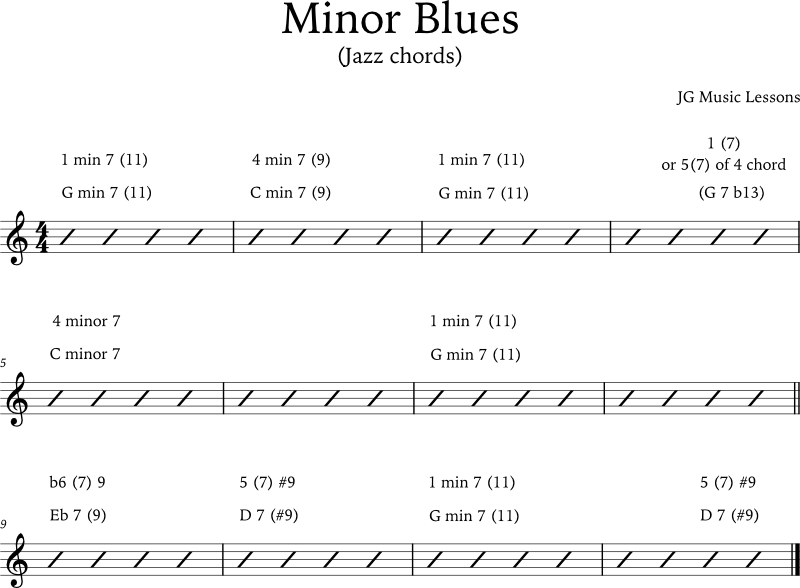
Minor blues chords in all keys
The following chart will show you the basic chords in a 12 bar minor blues: the 1 minor, 4 minor, and 5 minor, and 5 Major chord in every key.
| 1 minor chord (key center) | 4 minor chord | 5 minor chord | 5 chord |
|---|---|---|---|
| C minor | F minor | G minor | G Major |
| Db minor | Gb minor | Ab minor | Ab Major |
| D minor | G minor | A minor | A Major |
| Eb minor | Ab minor | Bb minor | Bb Major |
| F minor | Bb minor | C minor | C Major |
| Gb minor | B minor | Db minor | Db Major |
| G minor | C minor | D minor | D Major |
| Ab minor | Db minor | Eb minor | Eb Major |
| A minor | D minor | E minor | E Major |
| Bb minor | Eb minor | F minor | F Major |
| B minor | E minor | F# minor | F# Major |
Once you know the root note for every chord in a 12 bar blues, you can try applying them to the 3 chord progression variations we covered in this lesson starting from easy to more advanced variations.
Wrapping up
The minor blues progression is a simple but fun progression that you can use for improvising, creating music, and developing your skills.
Use the chord variations in this lesson as a guide to get you started, but if you want to go deeper, try shifting the chords to other keys which you aren’t familiar with.
If you need improvisation ideas for playing over a blues, check out how to play the blues scale on guitar or learn these jazz and blues licks over a dominant 7 chord.
📘 Get the free guitar practice guide here!
All the best,
JG Music Lessons
Start Playing Better, Faster
with Pro Membership! ✨
Get the guidance, tools, and support that keep your progress on track:
🏁 Always know what to practice next. Access the full Guitar Learning Roadmap with lessons in sequence.
🎼 Play songs with confidence. Step-by-step lessons of popular, classical pieces and other styles.
📙 Save time and frustration. Clear PDFs and ebooks that save time so you can focus on playing.
🎟️ Get rewarded for consistency. 2 free downloads every month (a $240+ yearly value).
🎁 Keep costs low while you grow. 50% off all charts, tracks, and posters — up to 75% off bundles.
🚫 Stay focused. Ad-free environment keeps you in the zone.
💬 Get help when you need it. Direct member support to keep you on track.

